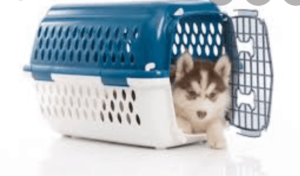If a dog is taught through positive reinforcement to love the crate, the crate becomes his own private and safe place, much like a bedroom for a child.
becomes his own private and safe place, much like a bedroom for a child.
A crate is not a magical solution to common canine behavior. If not used correctly, a dog can feel trapped and frustrated.
Crate training can take days or weeks, depending on your dog’s age, temperament and past experiences.
training can take days or weeks, depending on your dog’s age, temperament and past experiences.
Crate training takes advantage of your dog’s natural instincts as a den animal.
Never use the crate as a punishment. Your dog will come to fear it and refuse to enter.
Puppies under six months of age shouldn’t stay in a crate for more than three or four hours at a time.
Start with short in-crate sessions by leaving new toys or treats inside.
Your dog’s crate should be just large enough for them to stand up and turn around in.
should be just large enough for them to stand up and turn around in.
Block off the excess crate space so your dog can’t eliminate at one end and retreat to the other.
Encourage your dog to enter the crate by dropping some small food treats nearby, then just inside the door, and finally, all the way inside the crate.
Feed your dog meals in the crate.
After your dog enters the crate, praise them, give them the treat, and close the door.
A crate trained dog will voluntarily go in and out of their crate without any force, feel comfortable being locked in occasionally and will be calm inside, causing no fuss and showing no signs of stress.
without any force, feel comfortable being locked in occasionally and will be calm inside, causing no fuss and showing no signs of stress.
Credit: Please visit this website for complete details: https://www.humanesociety.org/resources/crate-training-101
Recent Content
God Bless Our Home by Jan & Mike Berenstain | Read Aloud Books
Children will learn how to embrace God’s blessings and be grateful for what they already have. Please Subscribe to my channel to stay up-to-date on my latest releases! Every single...
George can do all kinds of tricks on his new bicycle--even popping a wheelie! When the Man with the Yellow Hat tells him not to go too far, George gets curious and sets off on a journey through...


